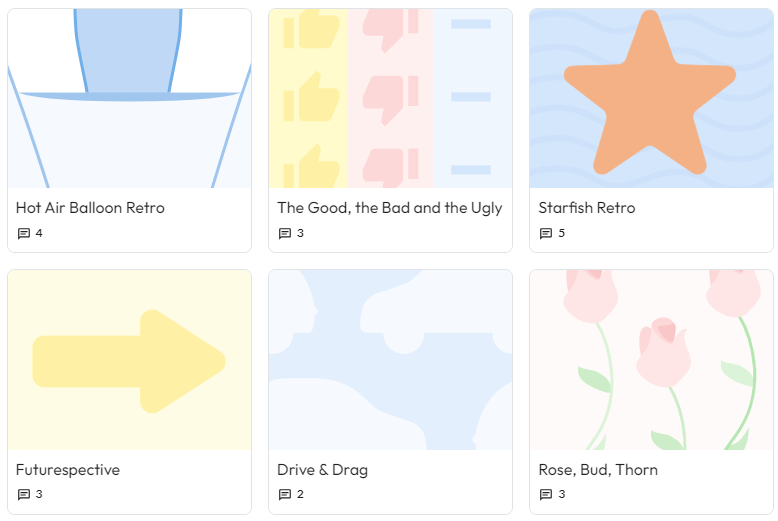Are you stuck on which agile transformation roadmap to use? Well, we are here to help!
If you want to adapt an agile transformation roadmap, then you have a wide range to choose from; there are many.
Therefore, we have handpicked some of the most commonly used roadmaps in order for you to understand which one you should use for your team.
In this article, you will discover the different roadmaps there are with short summaries of the steps you need to take for each one. We will also provide a model for each one and a description, ending with an all round model that summarizes the similarities of all models in one.
As agile is more responsive to change, a roadmap is too. Here is exactly what it is:
What is an agile transformation roadmap?
According to Atlassian a roadmap is a plan of action of how a product or solution will improve over time. When being utilised in agile development, it is there to provide context for the team.
It is responsive to shifts and changes in competitive landscapes, so can be flexible with new approaches. The whole point is for better business outcomes.
Before we go any deeper, a quick note. We recently had 11 international senior agile practitioners as guests in one of our webinars, asking one question: How do you scale agile methods the right way?
The result of this is the following fantastic video recording that answers some of the key questions when scaling agile, for example:
- Should you start your agile transformation rather bottom-up or top-down?
- How do you align leadership on a common goal and vision?
- How do you choose the right agile framework – and why is that actually not that important?
My recommendation: take a look! The video is rather long, but every single minute is worth it.
Why use an agile transformation roadmap?
- Align everyone on the next steps
- Flexible and flux, no fixed artifacts
- Help corporate offices
- Help teams gain right knowledge
- Help training to stick
- Make better-informed decisions
- Prioritize tasks
So now we have that out the way, here are five specific roadmap models from Kotter’s change management to Scale @ Scrum.
By the way, talking about agile transformation... one quick hint: Do you want to make sure that you are setting the right priorities in your agile transformation ?
Fill out our agile maturity assessment for your agile transformation – it only takes 3 minutes! You will even get a benchmark based on the more than 300 participants we already have. Have fun 🙂
Agile Transformation Roadmap #1: Change management by Kotter
“Change is the only constant”
Heraclitus, Greek philosopher
We have covered what this 8-step model by Kotter entails before: check it out here for more detail.
For now, in a nutshell, The Kotter Model runs in sequential order but all steps may be used at the same time. It inspires an urgency for change. The first four levels focus on the basis of change, then five to seven focus on the introduction of new behaviours, and lastly, eight is how to solidify the change. Here, we explain them a bit more in detail:
Focusing on the basis of change
- Step one is for the whole company to step into the change. Research by Kotter show that 75 % of the team members have to “support” the change in order for it to be successful.
- Step two concerns convincing the team that change is unavoidable for success. Out of this, “change coalition” will require working as a team to build the need for change.
- Step three is to effectively execute a vision. A strategy is always needed. Now is the time to determine the values for change etc.
Introduction of new behaviors
- Step four includes communicating this urgency to the team. Talk about your vision. Demonstrate the behaviour wanted to invest into the change.
- Step five is about removing obstacles and seeing if anyone is resisting the change. All need to be on board for change to occur, right?
- Step six is about creating short-term targets rather than one long-term goal. What do they say? Nothing motivates more than success!
- Step seven means analysing what went wrong and what went well. Real change calls for building - this is the part to see where to improve.
Solidifying the change
- Step eight refers to finally noting that continuous efforts are being displayed in every aspect of the company for change to be brought about. It is about consistency and progress.
This model works well for teams who are ready to implement change successfully and radically. We have made an eBook to empower your teams - check it out right here right now.
Most Agile Coaches and Scrum Masters run in circles...
...fixing superficial symptoms. Time to use psychology to foster sustainable mindset change.
Agile Transformation Roadmap #2: Scaled agile framework roadmap
"If you can't describe what you are doing as a process, you don't know what you are doing."
W. Edwards Deming
We have covered what Scaled Agile Framework is before - check it out right here .
The SAFe implementation roadmap series consists of 12 articles, where each one describes a strategy and an ordered set of activities proven to be successful in the framework.
We will briefly cover each “critical move”, as described by Dan and Chip Heath , in a simple fashion.
Getting the start right
- Otherwise known as the tipping point, step one is where visualization and realization come together. It is about implementing the need for change and the vision for change in one. Research shows that the tipping point is the beginning of the formation of a guiding coalition.
- In article two, the difficult journey begins. However, it doesn’t have to be hard. For step two, the leading agents are required to gather and set the way. There are three steps recommended to take for this: train the lean-agile agents, train executives and other managers, and charter a Lean Agile Center of Excellence (aka a working group).
- In article three, the training begins. This is because strong leadership is needed for any change to be visibly and successfully implemented. By making these three “critical moves”, the company is now on the path to success.
- As noted in step two, the LACE now comes together in step four. LACE stands for Lean Agile Center of Excellence and refers to a small group of people who are dedicated to promoting the Lean-Agile way of working. John Kotter notes the size of the team depends on the size of the company - change starts with just two or three people.
Start scaling
- Article five is about implementing SAFe. Now is the time to identify. Identify value streams and Agile Release Trains (ARTs).
- Now it is about making detailed plans. Article six covers the implementation of an organizational change and applying their new knowledge from training.
- So far, there have been value streams and an implementation plan. So article seven is a pivotal moment. It is the moment when there is the first launch for the ART. There are a number of steps to take in the lead up to the launch. Find out more on the SAFe website right here.
- The launch of the ART requires training of teams in article eight. Now the launch plan and stakeholders are trained, the real change can occur. Kotter says leaders must “shape the path”, in other words that requires training and time and effort.
- The first big events have been achieved. Now in article nine, the team is empowered. As the competency and potential are based on the team, now the agile teams must also be coached. If you want to know more about developing teams, check out our useful Ebook right now.
After first adoption
- In article ten, it is about producing more change and launching more ARTs. Imagine this article like a car picking up speed on the motorway in full gear.
- Nearing to the end, SAFe has been adopted. Article eleven focuses on the drive and the implementation of SAFe. Now is the time for the Lean Portfolio Management competency and being able to anchor the culture’s new approach to the company.
- The final article is highlighting the importance of constant change. Now they are to be congratulated after following all the steps! We are sure that progress has been made on this transformational journey and now is the time to accelerate the enterprise towards business agility.
Agile Transformation Roadmap #3: Scrum @ Scale
"Complexity is death."
Gereon Hermkes
It is all about simplifying scaling. Scrum @ scale is about a single Scrum team that is able to deliver optimal value at a demonstrable rate. According to Scrum @ Scale , the process “helps an organization to focus multiple networks of Scrum Teams on prioritized goals.”
So let us see the steps Scrum @ Scale takes in its repeatable pattern. What do they say? Rinse and repeat! Here are the ten steps simplified for you:
- Step one is where Scrum Coaches develop a list of problems for the organization.
- From there, they brief senior management about it and identify common goals etc.
- Step three is where an Executive Action Team (EAT) is formed, aka the leadership team of the transformation.
- The next step is where a leadership team is selected to prioritize all work. In other words, the Executive MetaScrum.
- Moving on with training to step five. This is where all team members, product owners, Scrum Masters and leadership etc. are trained by the EAT about who will work within the Agile Operating System.
- Step six concerns the product owner’s backlog.
- Step seven quickly moves on to one Scrum of Scrums with scaled daily scrums.
- Step eight means to deliver early and frequently.
- The last step is to expand the Agile Operating System to the next set of prioritisations before step ten...
- Rinse and repeat!
Agile Transformation Roadmap #4: Product manager - a disciplined agile roadmap
“The Product Management process blade includes the acts of identifying and evolving your organization's business vision ”
PMI.org
Roadmaps in product management describe the visions for three timings: near term, intermediate term (3-12 months), and long term (one year). The roadmaps provide product managers to prioritize decisions as well as planning activities. Here are some other process factors to take into consideration:
- Product owners want to provide products that will bring value to your organization.
- Due to a limited budget, there is a limited amount of products, too - meaning there has to be prioritization.
- The evolution of the roadmap is done by product management activities.
- Features, also known as outcomes, epics, stories etc., need to be allocated to teams to be implemented.
- The marketing of products to customers is taken on by the product manager to increase the chance of potential customers knowing about its existence.
- Product managers monitor the success of their products by end user satisfaction, market adoption rates etc.
As you can see, this process is focused on building the right products at the right time to ensure people will use them.
Agile Transformation Roadmap #5: Large-scale scrum
"Longing on a large scale makes history"
Don DeLillo
Unlike the other frameworks we discussed, at Large-scale scrum does not really give a roadmap. Instead, a Scrum product Backlog is produced by the product owner and team. Depending on how big it is, - it could take weeks or months - where analysis workshops, and estimation of first releases are identified.
For an established product, there shouldn’t be extensive research for the next release as the product owner and team should be doing a Product Backlog every sprint. Thus, the continuous product development means there is no need for a roadmap as such.
Large-scale scrum, otherwise known as LeSS framework, starts with understanding one-team Scrum. For LeSS to take effect, agile development with Scrum has to require a deep organizational change to become agile.
Let’s put into practice this organizational design framework as a scaled up version of one-team Scrum:
LeSS oversees two different large-scale Scrum frameworks:
- LeSS - eight teams
- LeSS Huge - up to a few thousand people on one product
We will focus on the LeSS framework below.
- Sprint planning part 1: Includes members from all teams - discuss where they belong and opportunities to find shared work.
- Sprint planning part 2: Each team holds this independently, though sometimes two or more teams may hold it in the same room.
- Daily scrum: Each team also holds this independently.
- Overall Product Backlog Refinement (PBR): This is a meeting held by one product owner and all teams to increase alignment with the PO and teams. The purpose is deciding which teams will implement which items - selecting those items for later in-depth single-team PBR.
- Product Backlog Refinement: The difference between this stage and the previous one is the only requirement is one team at a time in LeSS, but a variation may be multi-team PBR where more teams are held in the same room for increased learning.
- Sprint review: Includes people from all teams, not just the product owner. The purpose is inspecting the product increment and new items. Imagine it like this: Big room with many areas staffed with team members, where items developed are discussed and put on show.
- Overall retrospective: Includes product owner, Scrum Masters, rotating representatives from each team. The purpose is to improve the system as a whole.
Conclusion: One Roadmap based on all the others
"The destination is more important than the journey"
Less.works
From all the agile transformation roadmaps we have viewed, it is clear to see that there are some steps in common. So here is a roadmap for all based on the five common steps that should also be essential in your roadmap.
- Vision: Without a vision, action cannot happen. As Kotter notes in his seminal book, Leading Change, vision and strategy enables a foundation of change to evolve. When a clear and compound vision is in place, people will understand why you are asking them to change. It may be difficult to begin with, but then the next step will lead to cooperation. A vision statement can easily carry the message of “why”.
- Preparing leadership: The motivation for others to take change is crucial in any cycle to be successful. Building a functioning team requires understanding and cooperation in leadership before anything else takes place.
- Organize around value: For initial success, you must organize around value. This means the evolution of the roadmap has core target figures - customer value streams - to lead its way. In order to implement any strategies, customer value must be at the center.
- Prepare your teams and develop them through ambassadors: Culture is one of the biggest challenges in scaling agile methods. In order to spread the vision and the agile way of working throughout the organization, strong teams must be developed. The point is not to create another organization, but to ensure that enough people in the organization are ready in teams for the change. It is important to keep in mind that you can never reach 100 % of employees. You reach the turning point when you reach the 30%, which has the greatest impact. These 30%s will accelerate the change of the rest of the team.
- Regularly meet and iterate through retrospectives: There must be a structure for providing feedback. Thus, holding retrospectives and alike are always key at the end of a cycle to see what went well and what didn’t go well. It is also helpful to motor the success of a roadmap and to see how teams felt and if everyone is still aligned on the vision. Yes - you can and should even iterate on your vision!
By the way, to help you even more in building and developing successful teams, you are welcome to have a look at our post on 4 approaches to agile transformation. And then of course ...









